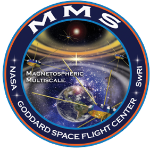Ultra-low frequency (ULF) waves have been observed and studied extensively in the Earth's ion foreshock region, with their basic wave properties determined. ULF waves can be formed from the backstreaming ions in the ion foreshock region upstream of the bow shock when the solar wind interacts with the terrestrial bow shock. However, many questions regarding their plasma characteristics and generation mechanisms remain unanswered. One example of such ULF waves is the 3-second wave first observed in the ISEE magnetometer data [Le et al., 1992; Blanco-Cano et al., 1999] and more recently by MMS [e.g. Wang et al., 2021]. This class of ULF waves is always right-handed with periods near 3 seconds in the spacecraft frame, near circularly polarized and typically occurring in regions of high plasma β. They are often associated with suprathermal ion populations. In this study, we present magnetic field and plasma measurements of multiple case studies of 3-s waves as observed by MMS in the Earth's ion foreshock. Using wavelet analysis and minimum variance analysis, we confirmed that these waves have a frequency of ~0.3 Hz (or 3.3s), and are circularly right-handed polarized in the s/c frame, consistent with earlier studies. We have also utilized multi-spacecraft techniques when MMS is in a string-of-pearl formation to definitively determine the propagation direction of these waves to be anti-sunward in the plasma rest frame. In two of the case studies, when Burst mode data is available, we also observed diffuse ion population associated with the 3-s waves and, interestingly, strong modulation of the suprathermal ions by the 3-s waves. Furthermore, these 3-s wave intervals are typically observed to precede lower frequency 30-s fast magnetosonic waves after MMS observed a period of quiet solar wind, indicating that these 3-s waves are observed near the foreshock boundary. The 3-s waves can also be observed to be superposed on lower frequency waves or have higher 1-Hz waves superposed on them. Implications for the wave-particle interaction of the 3-s waves in the foreshock region will be further explored.
|
|
|
Submissions (by speaker) > Poh GangkaiMulti-Case Studies Observations of 3-seconds Waves at Earth's Foreshock
1 : Catholic University of America/NASA GSFC
2 : NASA/GSFC
3 : Universidad Nacional Autónoma de México
4 : Catholic University of America
5 : University of Maryland, College Park
6 : University of Michigan [Ann Arbor]
7 : University of California, Los Angeles
|

 PDF version
PDF version
